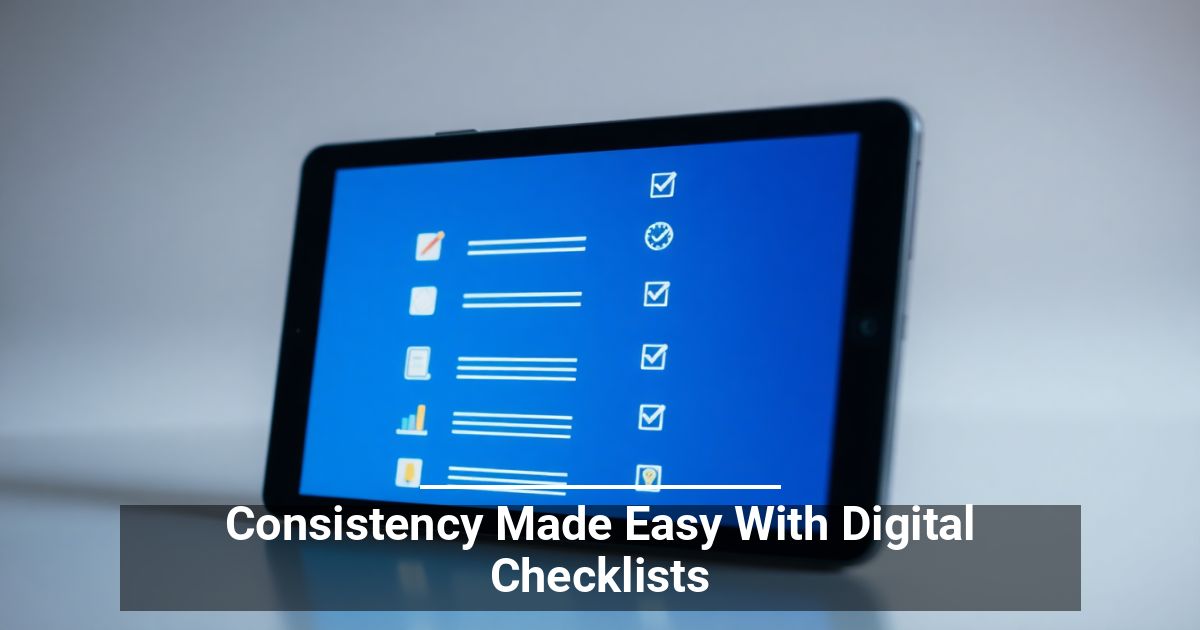 When you own a business, consistency isn’t just a goal. It’s a necessity.
When you own a business, consistency isn’t just a goal. It’s a necessity.
Whether you’re managing a remote team or overseeing daily operations in a single office, one thing is certain: Paper processes that don’t support consistency are holding you back. Digital checklists keep your company organized, compliant, and on budget, without the headaches of manual paperwork.
The Hidden Costs of Paper Processes
At first glance, pen-and-paper checklists are the safe, familiar choice. But in reality, paper-based systems cost businesses far more than most realize.
From printing and storage to the time wasted tracking down missing forms, the inefficiencies add up quickly. Paper checklists also increase the risk of human error. An illegible signature, a skipped step, or a misplaced form can lead to costly compliance issues.
Beyond contributing to financial waste, paper-based workflows limit visibility. Managers often have to wait for documents to be handed in or scanned before reviewing progress. By the time the data is available, it may already be outdated. In industries where accuracy and speed matter, delays can mean missed deadlines, safety risks, and more.
How Digital Checklists Improve Operational Efficiency
Switching to digital checklists streamlines workflows. Instead of juggling stacks of paper, employees can access step-by-step tasks from any mobile device or computer. This promotes operational efficiency by eliminating repetitive administrative work and ensuring that every task is completed accurately and on time.
Real-time data capture enables managers to monitor progress in real time, verify completion, and identify bottlenecks before they escalate. Automated alerts and reports can be generated with a few clicks. When everyone works on the same digital platform, communication improves and accountability becomes second nature.
Better Compliance and Accountability Tracking
Compliance isn’t optional, and digital checklists make compliance management much easier. Each checklist can include required documentation, timestamps, and digital signatures to ensure every step meets industry standards. This creates an auditable trail that simplifies inspections, reduces liability, and strengthens quality assurance.
In addition, accountability tracking features let you see who completed each task, when, and how thoroughly. That transparency builds trust among your team and confidence with clients or regulators.
Sustainability and Savings
Going paperless is also good for the planet. Digital checklists eliminate printing and storage costs while reducing waste.
Many companies that switch to paperless processes report significant savings within months, along with a measurable drop in environmental impact. Over time, those savings compound as workflows become more efficient and less dependent on physical materials.
Making the Transition Go Smoothly
It’s time to leave the clipboard behind and let digital checklists, but making the shift doesn’t have to be disruptive.
Start by identifying your most repetitive or error-prone paper processes and convert them into digital checklists first, using a platform that integrates with your existing tools and offers simple workflow automation. With the right setup, most organizations see immediate improvements in accuracy, speed, and collaboration.
Digital checklists are more than a technology upgrade. They create a foundation for consistency and long-term success. Embracing digital tools gives your business greater visibility, tighter compliance, and improved operational efficiency, all while saving time, money, and paper.



